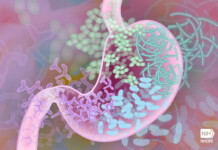Many athletes have engraved this message into their brains: The lighter I am, the better I will perform. While lugging around excess flab can indeed slow you down, many dieting athletes are already lean for their genetics—yet may yearn to be even leaner. These tenacious dieters overlook the fact that weight is more than a matter of willpower, and ask:
- What is wrong with my diet? For all the exercise I do, I should be pencil-thin by now. What should I be eating to lose weight…?
- Why am I not losing weight? Am I eating too much … or too little?
- When I first lost weight, I got faster and set PRs. Now, I just get injury after injury. Do you think that’s because of my diet?
If any of this sounds familiar, keep reading.
Weight-conscious athletes must remember they need to “nourish to flourish.” Denying the body of food denies it of valuable fuel and nutrients. Athletes in sports focusing on leanness or weight classes get stuck between a rock and a hard place. Speaking at the Academy of Nutrition and Dietetics (AND) annual Food and Nutrition Conference and Exposition (FNCE), Mary Jane De Souza PhD and Nancy Williams ScD, Penn. State University professors renowned for their research with female athletes, presented information that can help us learn why the quest for a lighter body commonly backfires into injuries and health issues that take a toll. Here are some key points to ponder:
You can only perform at your best if you are fueled at your best. You cannot reach peak performance when you are poorly fed. While some athletes might improve in the initial stages of weight loss, extended food restriction can lead to injuries as the body breaks down and lacks nutrients to heal quickly. Athletes with a high drive for thinness might set PRs – until they get stress fractures, torn ligaments, or a cascade of other muscle and bone injuries.
Your body needs fuel, not only to perform optimally, but also to function (pump blood, make hormones, grow hair, etc.). The energy needed to stay alive—your resting metabolic rate (RMR)—accounts for about 60 to 70% of all that you eat. You do not have to exercise to deserve to eat!
When energy availability is low, the body initiates a dangerous cascade of adaptations that lowers one’s RMR, curbs growth, and hinders reproduction. Women can stop having regular menstrual periods, and men can experience a drop in libido and sperm quality/motility. Both males and females need to eat enough to support normal body functions as well as their exercise.
Historically, female athletes thought loss of menses (amenorrhea) was a sign of training “hard enough” and being “lean enough” to be a successful competitor. We now know that amenorrhea means a 2 to 4 times higher risk of getting stress fractures (as compared to female athletes with regular menstrual periods). Athletes who experience one stress fracture are at high risk for getting more stress fractures. The combination of an energy imbalance and altered hormonal status contributes to reduced bone density and culminates in stress fractures now, and osteoporosis in the future.
Weight-conscious male cross-country runners, cyclists, and jockeys commonly have low bone density, similar to that seen in female athletes. Their bone injuries can often be linked to eating disorders. Yes, male athletes get eating disorders just like women do, though males, as compared to females, require a more severe energy deficit before bone and reproductive problems occur.
Bone loss in the spine and hip can be 2.5% per year if left unchecked. Bone loss is slow to recover and not all reductions in bone density are reversible. Nutrition strategies to improve bone health include eating more food/calories, consuming a calcium-rich food at least 2 to 3 times a day, and boosting vitamin D if blood levels are low.
To resolve the energy imbalance, athletes want to increase their food intake by at least 350 calories/day. This additional fuel can reverse the negative changes in men within a week, whereas in women, resuming menses can take months. Active women who eat more and still do not get a period for six months should consult with a reproductive endocrinologist to rule out any medical reasons for the amenorrhea.
Failing to consume enough calories can happen intentionally (with dieting) or unintentionally (with “eating only healthy foods”). Hunger can be inadequate to cue an adequate intake. So how can you tell if you are undereating? Energy deficiency can be difficult to identify because an under-fueled athlete can be weight-stable. The body simply conserves energy, which stops fat loss. That’s when athletes start to wonder: Am I overeating or undereating? If under-eating, surely the athlete would be losing fat, right? No. Nature wants to protect athletes from starving themselves to death.
Measuring energy balance is challenging and fraught with error. Counting calories and tracking how many calories you burned off with exercise can get obsessive and is generally inaccurate in that you have to account for your non-exercise calories. That is, after exercising for two-hours, do you then become a “sedentary athlete” for the rest of the day as you watch NetFlix?
Getting your RMR measured is one way to assess if you are eating enough. A simpler method is to notice if you are always cold, hungry, and thinking about food all day. If yes, and not losing body fat, you could easily be undereating. Experiment with eating more, to learn if feel warmer, less hungry, and are no longer thinking about food all the time.
The bottom line: When striving to lose weight to perform at your best, keep in mind health needs to be your most important goal. Without healthy bones and normal hormone levels, you cannot be the best athlete you want to be. You might be able to perform well at a lower-than-normal weight for a season or two but not for the long run. The best athlete is genetically gifted, well trained, and well fed. The website femaleandmaleathletetriad.org offers more information.







